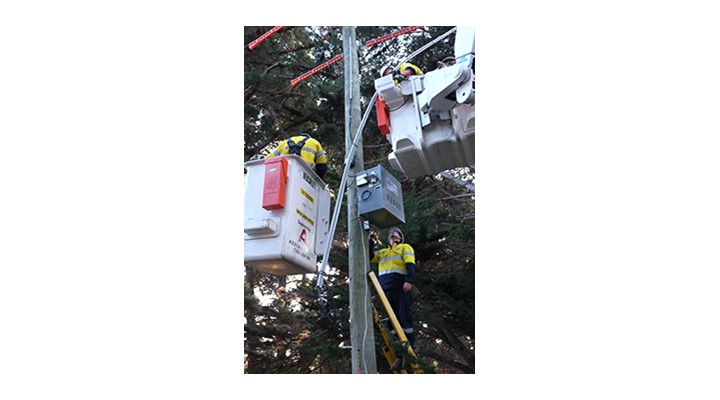The new system is capable of detecting and locating electrical discharges originating from defects on overhead transmission and distribution lines, underground cable systems and substation terminal equipment.
The research — which was originally inspired by the behaviour of electric fish — was led by Associate Professors Alan Wong and Wayne Rowe from RMIT's School of Electrical and Computer Engineering with the assistance of research fellow Dr Alexe Bojovschi and initial funding from the Australian Research Council.
Associate Professor Wong has commercialised the research and established IND Technology with private investors.
Last year, the company signed its first contract with one of the major power distribution companies in Victoria to install the early fault detection system.
Associate Professor Wong said if electrical discharges were not detected early they could lead to catastrophic events such as pole-top fires and power blackouts.
"The failure to detect these discharges early could lead to complete failure of the equipment, and in some cases could lead to bushfires," he said.
The team began research and development in the area of early-fault detection, sensor development and partial discharge detection in 2002.
The system they have developed detects intermittent discharges that originate from surface pollution and physical defects on high voltage insulators and other overheard distribution line equipment.
Associate Professor Wong said until this new technology, power companies relied on maintenance programs that included physical inspection, infrared scanning and insulator washing.
He said the system will save power companies time, cost and effort.
"Less unplanned outages mean that power companies will pay for less S-factor penalty and better service for their customers," he said.
"This system provides power distribution companies in Australia and around the world with a cost effective and 24/7 remote condition monitoring solutions that will reduce unplanned power outages, catastrophic failures such as pole-top fires and subsequent penalties in distribution networks."
The team drew on inspiration from electric fish when conducting their research, which was based on wireless sensing and high speed Filed-Programmable Gate Array (FPGA) signal processing technology.
"The electric fish produced intermittent electrical discharges that were of a similar nature to the discharge from the overhead equipment," Associate Professor Wong said.
"This electromagnetic energy of the discharge radiates into the surroundings.
"We developed the early fault detection system to identify the early sign of failure of overhead equipment by detecting the electromagnetic energy from the equipment."
Associate Professor Wong said there was high quality research in Australia that has the potential to result in the commercialisation of new innovative products or services.
"More seed funding should be made available to support early stage spin-off company in Australia, especially those in the areas of smart-grid and renewable energy systems," he said.







-160x160-state_article-rel-cat.png)




-160x160-state_article-rel-cat.png)

-160x160-state_article-rel-cat.png)







